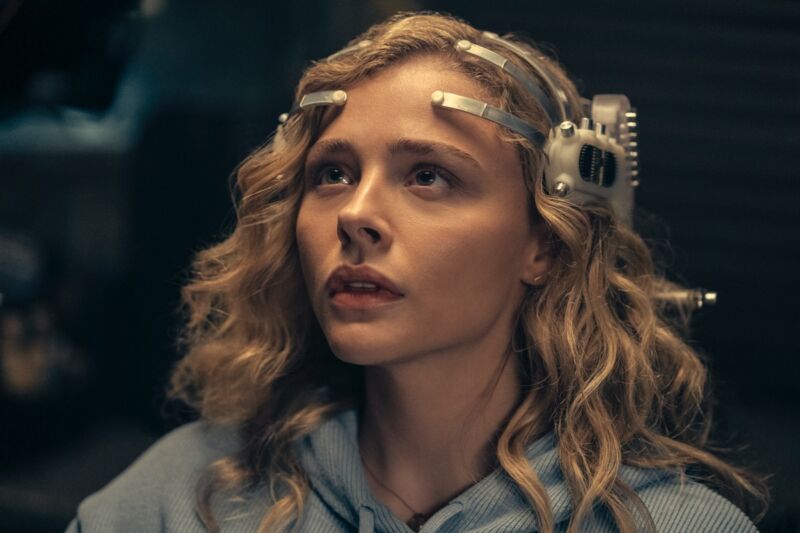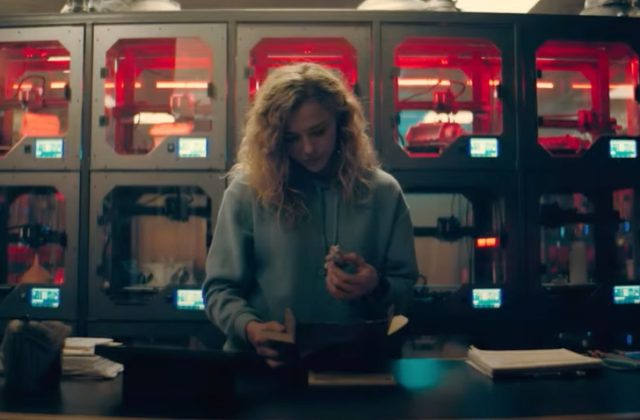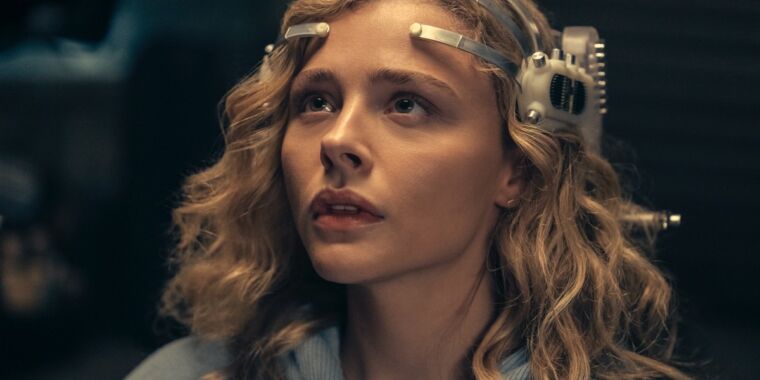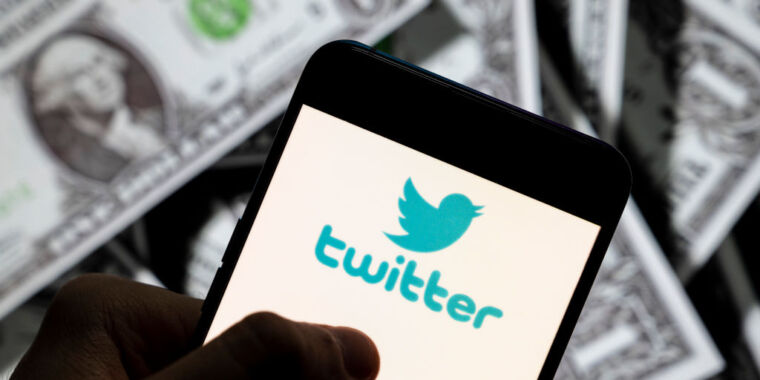
Prime Video
Sci-fi legend William Gibson’s 2014 densely layered novel The Peripheral ingeniously combines elements of noir murder mystery, time travel, and the author’s trademark cyberpunk futurism. It’s those features that make the novel so challenging to adapt for television, but Prime Video managed to pull off that feat with its new nine-episode series, The Peripheral, starring Chloë Grace Moretz.
(Minor spoilers below, but no major reveals.)
There are obviously some key divergences from the source material, as befits a TV adaptation. But as with Gibson’s novel, there are two plot lines that eventually begin to converge in the series. The first arc takes place in our near-term future and is centered on a young woman named Flynne (Moretz). Flynne works at the local 3D-printing shop in a small town. Flynne’s brother Burton (Jack Reynor) is a veteran of the US Marine Corps’ elite Haptic Recon force and suffers from brain trauma resulting from his cybernetic implants. Burton works security for a video game/virtual world maintained by a company called Milagros Coldiron. Flynne sometimes substitutes for Burton, and one day, he asks her to try a new kind of headset that introduces her to a virtual reality so vivid, it seems like she’s really there. The twist: She actually is “there,” but “there” isn’t where, or when, she thinks it is.
The second arc takes place in a futuristic and desolate London in the aftermath of an apocalyptic event dubbed “the Jackpot,” which wiped out 80 percent of the population. This world is essentially ruled by Russian oligarchs (“klepts”). The link between the two timelines is the titular black market technology, “peripherals,” which are favored by hobbyists known as “continua enthusiasts.” Running on “quantum servers,” the peripherals digitally link the users to the past, and the moment they make direct contact, the past splits off into an alternate timeline called a “stub.” The increasingly convoluted and interconnected plot involves a hunt for a missing woman named Aelita (Charlotte Riley), corporate espionage, political corruption, timeline shenanigans, and multiple attempts on Flynne’s life.

YouTube/Prime Video
Director Vincenzo Natali was a huge fan of Gibson’s seminal 1984 novel Neuromancer and had worked on developing a film adaptation. That film never got made—a common Hollywood occurrence—but he became friendly with Gibson from their frequent email exchanges. So Gibson sent him a copy of The Peripheral when it was published. Natali knew the novel was far too complex to ever work as a feature film, but his producing partner suggested it would make an excellent TV series.
Around the same time, Natali directed his first episode of Westworld. He thought Westworld producers Jonathan Nolan and Lisa Joy might be interested in an adaptation of The Peripheral and sent them a copy of the book. He was shocked when Nolan and Joy signed on right away. But Nolan was also a big Gibson fan—ever since he was 14 and stole his brother’s copy of Count Zero (1986). (It’s the second novel in Gibson’s Sprawl trilogy that started with Neuromancer and concluded with Mona Lisa Overdrive in 1988.) “The second Vincenzo said William Gibson, I’m in from the jump,” Nolan told Ars.
Showrunner Scott Smith, on the other hand, didn’t have much of a science fiction background, so the material presented a whole new world to him. He signed on to adapt Gibson’s novel on the strength of its characters and its heavy noir vibe. “Gibson is so renowned for the science part of the science fiction, that I think his naturalistic writing, his skill at creating characters, is sometimes overlooked or sold short,” he told Ars. “We always talked about Flynne’s superpower being empathy. She can enter this world that’s divided by all this time from her own and encounter people who are real to her. She treats them like fellow humans. Often technology can have the exact opposite effect, where it dehumanizes. This is about humanity triumphing over the tech.”








